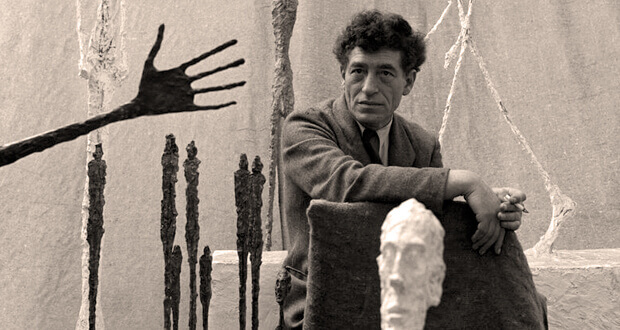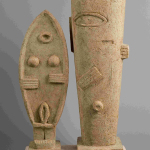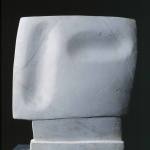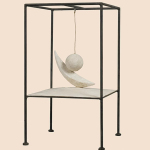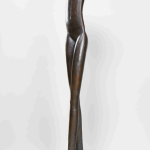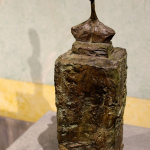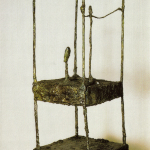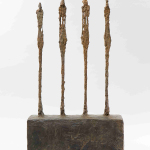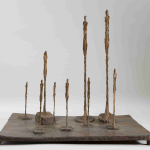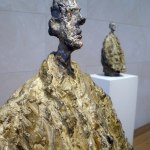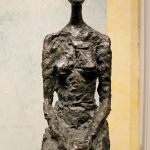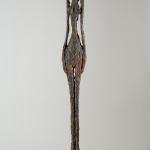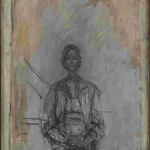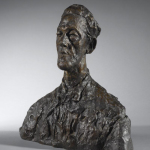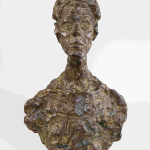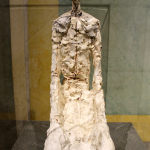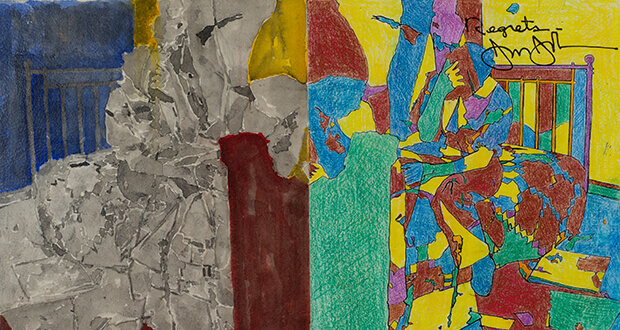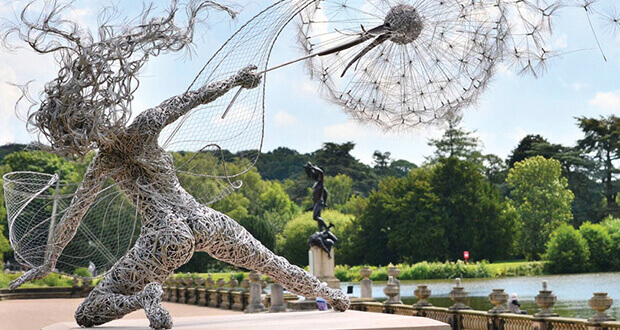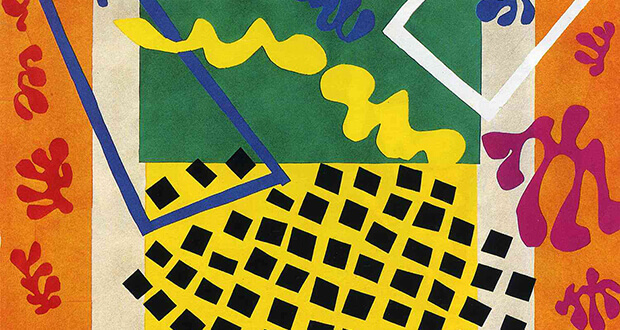Gam of Milan, Modern Art Gallery
Ending February , 1 2015
[box type=”shadow” ]Alberto Giacometti (1901 – 1966) has reconsidered the solid and static sculpture as a fluctuating art, digging in real world to capture quintessence of reality. He was the sculptor of energy: ” a person is much more than a human shell and releases energy in constant interaction with the surroundings”. Giacometti tries to shape his creations with vivid and particular interest for details, for every single expression, undressed by any unnecessary.[/box]
Famous for his slim and skinny human figures, Giacometti attended the École des Beaux-Arts and École des Arts et Metiers in Geneva. He moved to Rome in 1921 to study the masterpieces of the great masters of the past. He was really motivated and well supported by his family who soon recognise his talent thanks to the famous plasticine portrait in of his mother, made during the high school years.
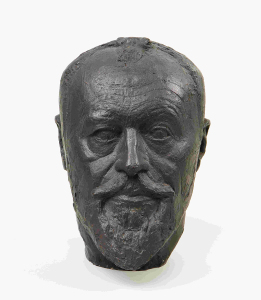
His solitary studies were focused on Tintoretto and Giotto, inspirations for his creations, expressed by an art undressed by any intellectualisms and reflecting the primitive origins. Like Pablo Picasso and other artists, Giacometti was interested in anthropology. His education, also, was enriched by courses attended in 1922 with the sculptor Antoine Bourdelle, where he was able to approach to cubism. From 1928 to 1935 he crossed the surrealism period, artistic movement characterized by a sense of utopia and instinct, during that he designed “objects with a symbolic function” such as Hanging Ball (1930), introducing the theme of delimitation of space. Like in this sculpture, Giacometti’s works seems taking distance of space instead of occupy it.
In 1927 the artist started showing his surrealist sculptures to Salon des Tuileries, earning success, making networking. He met extraordinary artists like Arp, Mirò and Ernst or writers like Eluard, Prévert, Aragon, Georges Bataille.
At the same time, he started a cooperative friendship with the father of surrealism, Breton, drawing and writing for his magazine “Surrealism for Revolution”.
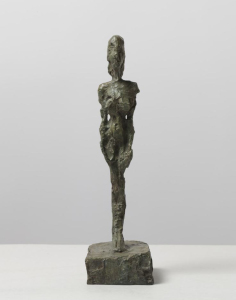
After the surrealistic period, Giacometti searched for the “total resemblance”, getting interested by human body and, after his father death in 1933, looked for a new type of artistic inspiration. He focused himself in head studies, from 1935 to 1940, in particular on eyes, creating and working in live session with models. Underneath his hands the models seem to be disintegratded. Moulding clay he digs deep in souls untill flesh is stripped away: dismembering muscles, flesh looking as being destroyed by the surrounding emptyness, with the final and ultimate features serrated and corroded.
According to the existentialist philosopher Jean-Paul Sartre Giacometti’s sculpture was “always halfway from existence and nothing……” At a first sight, his sculptures seem like a skinny martyrs from Buchenwald. After few seconds the impression overturns, everything looks like different… the barded and slim nature figures starts flying away towards the sky, quite flying into the space.
In 1946 Giacometti came back in Paris and meet again his brother Diego, when the new period of brand new verve began and the statues started stretching and dilating further into a space that contains and fulfils them. In 1962 he gained the Great Award for sculptures at the Venice Biennale. The last years where in name of hectic activity and a succession of exhibition all over Europe. Even though seriously ill, he went to New York in 1965 to participate to his event at the Museum of Modern Art. As his last work he wrote the book “Never ending Paris”, a succession of 150 lithographs of his memory of all the places he want and live in. During one of his last trip to Italy, Giacometti absolutely wanted to see again Michelangelo’slast work,Pietà Rondanini, and observed it on a long silence. He died in Genuary 1966; his grave is located in Borgonuovo, next to his parents.
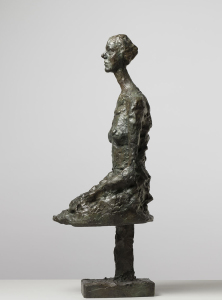
The curator Catherine Grenier, director and curator also for the Alberto and Annette Giacometti Foundetion of Paris, designs a chronological path divided in five sections, and thanks to the 60 works she gives us an interpretation of the entire artistic career of Giacometti. The exposition is completed with a section of skechtes and photographs of Giacometti during his work. The city hall of Milan supports the exhibition, organized and located in Milan at the Modern Art Gallery, also sponsored by Gruppo 24 ORE. The Gam of Milan will host 3 more exhibitiosn dedicated to sculpture in the next future.
“Every piece seems to go on it’s own , alone, in the opposite direction to each others, ignoring them. They cross and surpass withouth seeing each other. Maybe never reaching their goal. My only purpose is to express and approach this idea, that apprears to be impossible to be sculpt.” ” Art is a necessary tool to express in a better way things in the way I see them. I draw and sculpt […] to shape reality, to defend and nurish myself.” (Giacometti )

